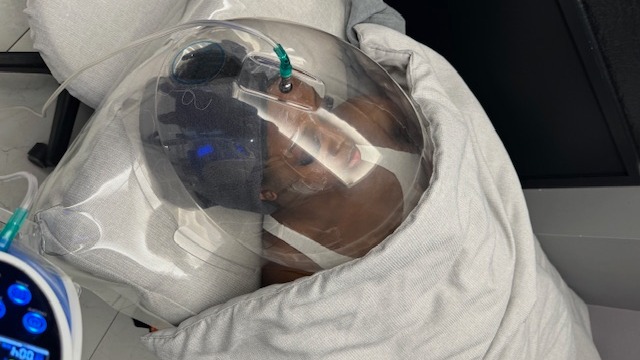When it comes to the world of skincare, South Korea is an undisputed series champ. From hydrating skin essences and serums to their famed assortment of sheet masks, Korean beauty practices have etched an inimitable path toward supple, glowing skin that is now the global golden standard. So when I began planning my ten-day fusion trip to South Korea and Japan, the first three days of which would be spent in Seoul, immersing myself in their skincare utopia was number two on my list of must-do’s (second only to trying an authentic, cheesy Korean corn dog).
When taking any international trip, there is no shortage of learning curves, from navigating their taxi and transit system to managing the time change (14 hours in our case). So it was unsurprising that we felt a bit out of our wits when it came to booking spa visits and shopping for skin care in their vast sea of pharmacies and local esthetic hubs. But through some research and a bit of trial and error, my travel companions and I were able to quell the majority of our K Beauty curiosities.
If you are planning a trip to South Korea or just fancy a bit more information regarding K Beauty’s meteoric rise to mainstream dominance, here is a comprehensive visitor’s guide to the country’s inimitable skincare scene.
A facial is a must
One of the most defining characteristics of Korean beauty is the “glass skin” archetype. This refers to the appearance of skin that is so blemish-free and smooth that it is almost reflective. Now, real skin, no matter what has texture and discoloration, so I was under no delusions that getting a facial in the skincare capital of the world would fix all of my skin woes. However, the idea of “glass skin” was front of mind when I was searching for treatments I’d like to pursue.
This is how I stumbled across Muse Clinic. Located in Seoul’s buzzy Gangnam district; Muse is a skincare clinic that offers a wide array of services, including Botox, peels, waxing and, of course, facials. Since we were only going to be in Korea for a few days, I did not want to do any procedures that required any downtime or follow-up appointments, so no peels for me.
I ultimately decided on their O2 Derm Oxygen Therapy facial, a non-invasive “skin improvement with a high concentration of oxygen and negative ions,” as stated on their website.
What drew me to this was that, although not labeled on their website, the technology used in this procedure was akin to similar services touting glass skin results at other spas. The process involved a consultation where they explained the procedure and expected results. This was followed by a double cleanse and ampoule dispersion. Then, the fun part, another moisture ampoule was applied before they placed the straight-from-the-future oxygen mask. After a few minutes in the chamber, the service is finished with a modeling facial mask and, of course, sunblock. The procedure cost 39,000 won, which is equivalent to about 30 USD.
Avoid high-cost areas
Spas, in general, are a pretty big deal in South Korea, and before we did any research, we assumed it was best to get our facial at the same place we wanted to go to for general spa activities (massages, steam rooms, saunas, etc.) Well, we were wrong. Because of the location of many of these spas, the prices can get a bit high for a place famed for its affordable skin care services. To get a basic facial at the spa we visited, Aquafield, located inside the Starfield Hanam Mall, you’d have to pay the $34 entry fee ($17 after 5:00 p.m.) and then another $82 for the actual facial—hard pass. Make no mistake, the spa itself was great and featured a bevy of interactive sensory rooms, relaxation stations, steamy saunas, a rooftop pool and a jacuzzi. It’s great for an afternoon of leisure, but it’s more financially advantageous to do your facial separately, somewhere else.
You may not see the same hyped products from TikTok
Olive Young is to Korea as Ulta is to the United States. That is to say, Olive Young is one of the most prolific beauty retailers in South Korea, with over 1,000 locations. One location we visited was three stories, with each floor dedicated to either makeup, skincare or general health wellness. There was even a chilled wine and adult beverage section — my Ulta definitely doesn’t have that!
But when it comes to actually shopping for skincare, some of the hyped “K-Beauty” products you may find at a Sephora in the States are not as popular or simply don’t exist in these stores. So, instead of the Glow Recipe Dew Drops, a K-beauty fave in the States, I was inducted into a wonderland of new brands and products I’d never heard of before.
Even some of the smaller stores located along their street markets introduced me to concepts I didn’t know were a thing. “Volume Fill Up Essence?” “O2 Mask cleanser?” It was indeed a whole new world. In short, if you plan on stocking up on skincare while visiting South Korea, come with an open mind and spacious luggage.
What to avoid
One thing I was sure to be cautious of when booking services in Seoul was anything with the word whitening or lightening in the title. Like many places around the world, fairer skin is central to South Korea’s beauty standards, and many of the procedures and products highlight this.
There is no scarcity of whitening, bleaching and lightening agents, boasted, quite proudly, on their websites and in their stores. Some clinics even offer whitening injections, which claim to lighten the skin from the inside out. As long as you are diligent in your planning and ask clarifying questions during any consultations, this should not be an experience-inhibiting factor.
It is a good reminder, however, that on a global scale, there is still a lot of work to be done regarding how we view deeper skin tones.



